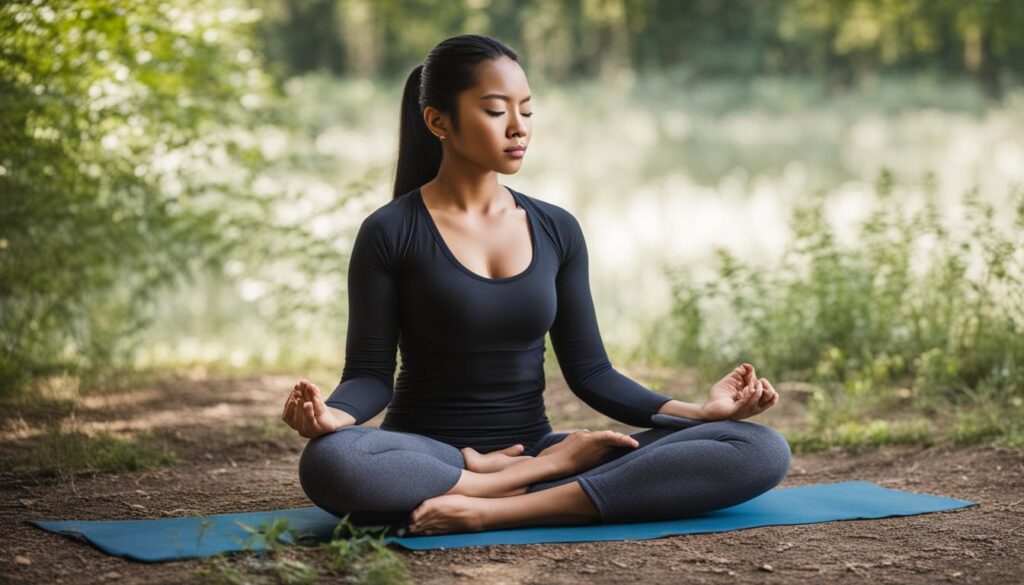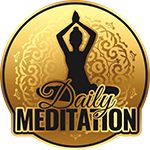Disclosure: This Post Contains Affiliate Links; We earn a commission on purchases.
Welcome to our comprehensive guide on breathing exercises for anxiety. If you find yourself feeling overwhelmed, stressed, or anxious, practicing these relaxation techniques can help you find peace and regain control. By incorporating deep breathing exercises, such as mindful breathing and breath control techniques, into your daily routine, you can experience relief from anxiety and a sense of calm.
When anxiety strikes, our breath tends to become shallow and rapid. This is where deep breathing exercises come in. By focusing on slow, deliberate breaths, we can activate the body’s relaxation response and reduce stress levels. These breathing exercises are simple, effective, and can be done anywhere, at any time.
Key Takeaways:
- Deep breathing exercises can help manage anxiety and promote relaxation.
- Practicing breathing exercises regularly can lead to a reduction in anxiety symptoms.
- Calming breathing techniques, such as the calming breathing technique and alternate-nostril breathing, can activate the body’s relaxation response.
- Belly breathing or diaphragmatic breathing helps promote feelings of calm and relaxation.
- Box breathing and the 4-7-8 breathing exercise are simple techniques that can be done anywhere to reduce anxiety.
The Calming Breathing Technique
The calming breathing technique is a simple exercise that can be done anywhere and takes just a few minutes. It involves taking deep breaths in through the nose and out through the mouth, allowing the breath to flow deep down into the belly. This technique can help activate the body’s relaxation response and promote a sense of calm. It is recommended to practice this technique regularly as part of your daily routine.
When practicing the calming breathing technique, find a quiet and comfortable space where you can focus on your breath. You can sit or lie down, whichever is more comfortable for you. Place one hand on your stomach and the other hand on your chest. Take a deep breath in through your nose, feeling your stomach rise as you fill your lungs with air. Hold your breath for a moment, and then exhale slowly through your mouth, feeling your stomach fall as you release the air. Repeat this process for several breaths, focusing on the sensation of the breath moving in and out of your body.
This simple yet powerful technique can be a valuable tool for stress relief and anxiety management. By taking deep breaths and directing your attention to your breath, you can shift your focus away from racing thoughts and bring yourself into the present moment. This can help calm your mind, reduce the physical symptoms of stress, and provide a sense of relaxation.
Make the calming breathing technique a part of your daily self-care routine. Set aside a few minutes each day to practice this technique and reap the benefits of deep, intentional breathing for stress relief and anxiety management.
Alternate-Nostril Breathing
One effective breathing technique for anxiety relief and stress reduction is alternate-nostril breathing, also known as nadi shodhana. This practice involves alternating between nostrils as you inhale and exhale, promoting balance and relaxation in the body.
To practice alternate-nostril breathing, find a comfortable seated position. Using your right hand, gently close your right nostril with your thumb and inhale deeply through your left nostril. Pause briefly at the top of your inhalation, then close your left nostril with your ring finger and exhale slowly through your right nostril. Inhale through your right nostril, pause, and then exhale through your left nostril. Continue this pattern for several rounds, alternating between nostrils with each breath.
This breath control technique can help calm the mind and bring a sense of balance and calmness. By incorporating alternate-nostril breathing into your daily routine, you can experience anxiety relief, stress reduction, and improved overall well-being.
| Steps | Description |
|---|---|
| 1 | Sit in a comfortable position and close your eyes. |
| 2 | Place your right hand in Vishnu Mudra, with your index and middle fingers gently pressing your palm. |
| 3 | Closing your right nostril with your thumb, inhale deeply through your left nostril for a count of four. |
| 4 | At the top of your inhalation, close your left nostril with your ring finger, hold the breath for a count of four. |
| 5 | Release your right nostril and exhale slowly for a count of four. |
| 6 | Inhale deeply through your right nostril for a count of four. |
| 7 | Close your right nostril with your thumb, hold the breath for a count of four. |
| 8 | Release your left nostril and exhale slowly for a count of four. |
| 9 | Repeat steps 3-8 for several rounds, gradually increasing the breath count if comfortable. |
Belly Breathing or Diaphragmatic Breathing
Belly breathing, also known as diaphragmatic breathing, is a technique that focuses on using the diaphragm to take deep breaths. By engaging the diaphragm, you can activate the body’s relaxation response, leading to reduced anxiety and a sense of calm and relaxation.
To practice belly breathing, find a comfortable position, either sitting or lying down. Place one hand on your stomach and the other on your chest. Close your eyes and take a slow, deep breath in through your nose, allowing your stomach to rise. As you take in the breath, feel your diaphragm expanding and filling your lungs with air.
Hold the breath for a moment, and then exhale slowly through your mouth, allowing your stomach to fall. As you exhale, imagine releasing any tension or stress from your body. Repeat this deep, diaphragmatic breathing for several minutes, focusing on the sensation of your breath and the rise and fall of your stomach.
Belly breathing is a powerful tool for managing anxiety, reducing stress, and promoting relaxation. By incorporating this technique into your daily routine, you can experience improved overall well-being and a greater sense of calm.
| Benefits of Belly Breathing | How to Practice Belly Breathing |
|---|---|
|
|
Try incorporating belly breathing into your daily routine, whether it’s in the morning to start your day with a sense of calm, during a midday break to reduce stress, or in the evening to promote relaxation before bed. With regular practice, you will discover the numerous benefits of belly breathing for anxiety relief, stress reduction, and overall well-being.
Box Breathing
Box breathing, also known as four-square breathing, is a simple technique that can help you manage anxiety and reduce stress. This breath control exercise involves inhaling, holding the breath, exhaling, and holding the breath again, all for an equal count of time. By incorporating box breathing into your daily routine, you can promote relaxation and increase feelings of calm.
To practice box breathing, follow these steps:
- Inhale: Take a slow, deep breath through your nose for a count of four.
- Hold: Hold your breath for a count of four.
- Exhale: Slowly exhale through your mouth for a count of four.
- Hold: Hold your breath again for a count of four.
Repeat this cycle of inhaling, holding, exhaling, and holding for several minutes. You can do this exercise anywhere and at any time, making it a convenient technique for anxiety management and stress reduction.

Box breathing helps activate the body’s relaxation response and promotes a sense of calm. By focusing on your breath and engaging in this rhythmic pattern, you can experience reduced anxiety and increased feelings of tranquility. Incorporate box breathing into your daily self-care routine to support your overall well-being and stress management.
The 4-7-8 Breathing Exercise
The 4-7-8 breathing exercise, also known as the relaxing breath, is a powerful relaxation technique that can provide relief from anxiety and stress. Developed by Dr. Andrew Weil, this technique involves a simple yet effective breathing pattern that activates the body’s relaxation response.
To practice the 4-7-8 breathing exercise, follow these steps:
- Inhale: Sit or lie down in a comfortable position and close your eyes. Take a slow, deep breath in through your nose, counting to four as you inhale. Feel your belly rise as you fill your lungs with air.
- Hold: Hold your breath for a count of seven. During this time, focus on releasing any tension in your body and allowing yourself to fully relax.
- Exhale: Open your mouth slightly and exhale forcefully through your mouth, making a whooshing sound, for a count of eight. Feel the tension leaving your body as you breathe out.
- Repeat: Repeat this cycle of breathing (inhaling for four counts, holding for seven counts, and exhaling for eight counts) for a total of four breaths.
By practicing the 4-7-8 breathing exercise regularly, you can experience a reduction in anxiety and an overall sense of well-being. This technique can be done seated or lying down, making it accessible and easy to incorporate into your daily routine.
Take a moment now to try the 4-7-8 breathing exercise for yourself and see how it can help you find calm and relaxation:
“The 4-7-8 breathing exercise has become an essential part of my stress management toolkit. It’s amazing how such a simple technique can bring about a profound sense of calm and tranquility.” – Sarah
Remember, the 4-7-8 breathing exercise is just one of many effective breathing techniques for anxiety relief and stress reduction. Experiment with different techniques to find what works best for you and make breathing exercises a regular part of your self-care routine.
Lion’s Breath
Lion’s breath, or simhasana in Sanskrit, is a deep breathing practice that can provide deep relaxation and stress relief. This powerful technique involves sticking out the tongue, opening the mouth wide, and exhaling forcefully while making a “ha” sound. By doing so, you release tension in the facial and jaw muscles and create a sense of release and freedom.
By practicing lion’s breath in a comfortable and seated position, you can stimulate the relaxation response, which promotes a sense of calm and well-being. This practice not only helps alleviate stress but also improves cardiovascular function. Incorporating lion’s breath into your daily routine can have a positive impact on your overall health and anxiety management.
To perform lion’s breath:
- Sit comfortably and relax your body.
- Inhale deeply through your nose.
- As you exhale forcefully, open your mouth wide and stick out your tongue, making a “ha” sound.
- Repeat this process for several rounds, allowing each exhale to be a complete release of tension.
By practicing lion’s breath regularly, you can experience the benefits of deep breathing, stress relief, and enhanced anxiety management.

Mindfulness Breathing
Mindfulness breathing is a powerful practice that can help calm the mind, reduce anxiety, and promote a greater sense of present moment awareness. By focusing on your breath and bringing your attention to the here and now, you can cultivate a deep sense of calm and groundedness.
One technique to enhance mindfulness breathing is to choose a calming focus, such as a sound or a positive word or phrase, and silently repeat it as you inhale or exhale. This can serve as an anchor to draw your attention back to the present moment whenever your mind starts to wander.
“Breathing in, I am calm. Breathing out, I am at peace.”
As you engage in mindfulness breathing, observe the sensations of each breath as it enters and leaves your body. Notice the rise and fall of your abdomen or the feeling of air passing through your nostrils. Be fully present and let go of any distractions or thoughts that arise.
By practicing mindfulness breathing regularly, you can train your mind to stay focused on the present moment, reducing anxiety and promoting a deep sense of relaxation. Allow yourself to fully immerse in the experience of each breath, embracing the peace and tranquility it brings.
| Benefits | Description |
|---|---|
| Reduces Anxiety | Mindfulness breathing helps calm the mind and reduce anxiety by shifting your focus to the present moment. |
| Stress Reduction | By practicing mindfulness breathing, you can activate the body’s relaxation response, leading to reduced stress levels. |
| Increased Present Moment Awareness | Through mindfulness breathing, you train your mind to stay fully present, enhancing your awareness of the here and now. |
Conclusion
Breathing exercises are powerful tools for managing anxiety and stress. By incorporating these exercises into your daily routine, you can find calm and regain control over your emotions. From the calming breathing technique to alternate-nostril breathing, belly breathing, and mindfulness breathing, there are various techniques available to suit your preferences.
Practicing these exercises regularly can lead to reduced anxiety, improved well-being, and a greater sense of relaxation. It is important to find a technique that resonates with you and make it a part of your daily self-care routine. By dedicating a few minutes each day to these exercises, you can experience the benefits of stress reduction and anxiety management.
Remember, breathing exercises provide a natural and accessible way to manage your anxiety and create a sense of peace within yourself. Start by trying out different techniques and see which ones work best for you. Regardless of the technique you choose, deep breathing and mindfulness are key elements that can help you feel more grounded and centered. Practice regularly and make breathing exercises an integral part of your overall well-being.
Source Links
- https://www.nhs.uk/mental-health/self-help/guides-tools-and-activities/breathing-exercises-for-stress/
- https://www.verywellmind.com/abdominal-breathing-2584115
- https://www.forbes.com/health/mind/breathing-exercises-anxiety/
Ryan Conlon is a passionate advocate for mindfulness and meditation, dedicated to helping others discover the transformative power of these practices in their lives. As the founder of Daily Meditation, Ryan’s mission is to provide a sanctuary for individuals seeking peace, clarity, and well-being amidst the chaos of modern life. With a background in psychology and years of personal experience with meditation, Ryan brings a wealth of knowledge and insight to his work. Through Daily Meditation, he shares practical guidance, inspirational content, and expert resources to support others on their journey toward greater mindfulness, resilience, and inner peace.
Subscribe to Our Newsletter

















